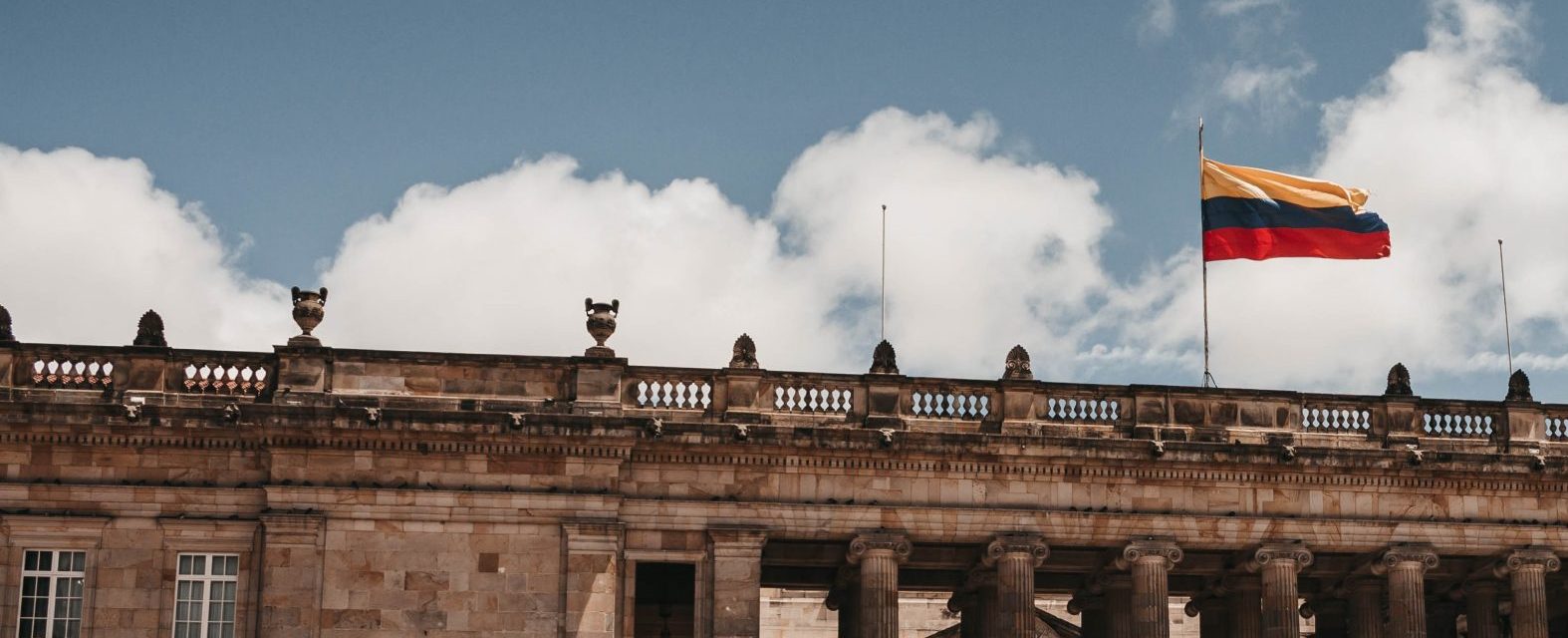New factors and circumstances are reshaping and redefining modern drug dealing organisations in Colombia.
A defensive response
Consistent violence has occurred within and throughout Colombia in the last thirty years as a consequence of the so-called “war on drugs” between the state and criminal actors. This unrest has catalysed a marked process of fragmentation and “micro-cartelisation” of the drug trafficking business.
This phenomenon is a clear indicator that the state has failed to gain a strong foothold in the fight against illicit drug trafficking, despite the wealth of material resources at its disposal. In fact, the dynamism and adaptability of criminal actors involved in drug trafficking has allowed these non-state groups to survive the repressive policies of the state.
The full-scale counter-narcotics and counterinsurgency strategy adopted by Colombia and financed by the United States (US) has been met by a defensive cartel response. In particular, corruption and the implementation of bribes appear to have replaced exercises of violence as the cartels’ methodology of choice. The new generation of drug traffickers have learned from their predecessors that violence is bad for business.
The failure of the state’s counterinsurgency tactics
Guerrilla group the Revolutionary Armed Forces of Colombia (FARC) entered the drug trafficking business in 1982, after which the anti-narcotics fight financed by the US also led a counterinsurgency struggle against the Colombian guerrillas.
These counterinsurgency efforts focused primarily on seek and destroy tactics. Whilst nominally actions to reduce support for guerrilla groups by addressing community grievances were included, the magnitude of this task meant that a military-centric strategy was favoured.
Criminal organisations were thereby able to take advantage of the disenfranchisement of the lower classes and the gaps left by the Colombian state. Armed groups began to challenge the state not only through violence, but also through the provision of services and social goods to the most disadvantaged communities. In places like Argelia, illicit crops empowered the smallholders, allowing them to resist dispossession and challenge inequality and exclusion.
Indeed, the FARC enjoyed high levels of approval and legitimacy in many rural areas that were under its control. This is due to the fact that many of the resources obtained through the cultivation and processing of the coca leaf were channelled back into the community through investments in infrastructure, housing projects and the provision of basic goods and services. In the absence of the Colombian state, the FARC engaged in local governance practices and for a long time were viewed as benefactors by the local population.
“Micro-cartelization” and the Colombian peace agreement
The peace agreement signed in 2016 between the Colombian government and the FARC promised to end five decades of war, deliver an appropriate response to the inequality and poverty that had fuelled the conflict, and provide an alternative to the illicit crops that many communities relied on for their livelihoods.
However, the peace agreement left a power vacuum in regions previously controlled by the FARC that was not filled by the state, eroding any possibility of social support. As a result, the commitment to illicit crop substitution was never fulfilled in many areas. Many coca-growing communities continue to perceive the Colombian state as a perpetrator of human rights violations like extra-judicial killings and kidnap in the absence of the promised measures to support historically marginalised regions. In this context of an absent state and the FARC demobilisation, new actors have emerged with different levels of local support, pressing to establish their dominance over these regions and encouraging the “micro-cartelization” process.
The process of criminal fragmentation
The disappearance of the big drug cartels has led to the creation of smaller gangs looking to enter into the highly lucrative cocaine trade. This process of fragmentation put an end to the vertical command structures of the macro-cartels, giving rise to the formation of a significant number of midsized organisations with their own unique characteristics. These organisations have become less traditional and less dependent on territorial control, instead developing global networks for cocaine distribution.
The transnational nature of organised crime has allowed criminal groups to expand and improve their networks, creating links with other illegal actors through the outsourcing of labour and developing strategic alliances, all of which damages state legitimacy.
A network of different criminal organisations now act as facilitators and intermediaries and are responsible for the transportation, storage, protection and financing of the drug trafficking business. This process of fragmentation supported by the exponential growth in coca leaf cultivation and the opening of alternative markets in Europe, Asia and Oceania, is a phenomenon known as the “democratization of cocaine” that gave smaller players access to the drug trade. At the same time, the global commercialisation of cocaine has improved the ability of criminal groups to co-opt and corrupt security forces and political and administrative officials through bribery.
In certain regions, these new players are also in charge of providing basic goods and services, employment and social protection to those living in the territory they control, reaching high levels of legitimacy among local communities in the absence of effective state institutions. In this way fragmentation allows criminal groups to establish a new social, economic and political order without relying on excesses of violence, which blurs the line between legality and illegality. Investment in legal enterprises furthers this blurring and allows criminal actors to embed themselves in the licit economy.
Beyond violence: new tactics for a new generation of traffickers
The fragmentation of the cartels highlights the determination of a new generation of criminal organisations to go beyond the limits of traditional structures of crime.
The previously dominant “aggressive competitor” model used violence to challenge state authority, fighting via bomb attacks, assassinations and kidnappings of political leaders. These organisations were hierarchical with few transnational links and an unwillingness to cooperate with other criminal groups.
In contrast, the current pattern focuses on infiltrating different branches of public power. Indeed, the sophistication of modern criminal groups is based on avoiding the excessive use of violence, cultivating an image of respectability and maintaining a low profile through the bribery of public officials and provision of public services. It is characterized by its capacity to generate cooperative networks and horizontal structures which undermine the kingpin approach relied on by many counternarcotic strategies.
Of course, the exercise of violence at the hands of these organisations is still present, but it is considerably lower. The emergence of various FARC dissident groups such as the “FARCRIM” and the “hidden FARC” has not translated into a sustained increase in violence or territorial dispute. This suggests that without political objectives non-state actors need not resort to the exercise of extreme violence even in a context of competition between different criminal groups.
Another factor contributing to the reduction in violence is the increasingly strategic selection of victims which minimises civilian casualties. This was the case after the 2006 demobilisation of the Northern Bloc of paramilitary and drug trafficking group the United Self-Defence Forces of Colombia (AUC), which did not result in a significant increase in homicides in Santa Marta, Cartagena and Barranquilla, apparently due to this selective implementation of violence. This selectivity allows criminal organisations to manage competition more effectively, thereby avoiding a repressive state response.
In short, the new generations of cartels discovered that violence is detrimental to the drug business because it generates a punitive response from state security agencies and reduces legitimacy among local communities. Settling differences through negotiation and infiltrating public institutions through bribery thereby presents an alternative to previous strategies of violence. The main objective of this strategy is achieving anonymity by maintaining a low profile and a veneer of legitimacy, allowing the new generation of drug dealers to remain in the shadows. There has therefore been a transition from the “silver or lead” policies of Pablo Escobar and the like to the new strategy of “we don’t kill judges…we buy them”. Such tactics were also explored in colonial counterinsurgency efforts and other forms of asymmetric warfare. Therefore the new cartels, like others before them, have discovered that “much can be accomplished with well-targeted bribes that cannot be accomplished with well-targeted ordnance”.
Damian Gariglio is a member of the Centre for International Political Studies (CEPI) and a researcher at the University of Buenos Aires. He is currently working in Bogotá for the Colombian Campaign to Ban Landmines as a Humanitarian Disarmament Adviser.
Main image credit: ‘People Walking Near Brown Concrete Building’, Jose Vasquez, via Pexels.
The views expressed in this article are those of the author and do not necessarily reflect the views of RUSI, Focused Conservation, or any other institution.



